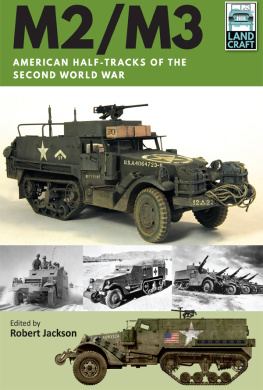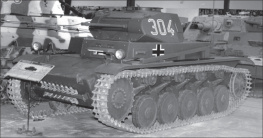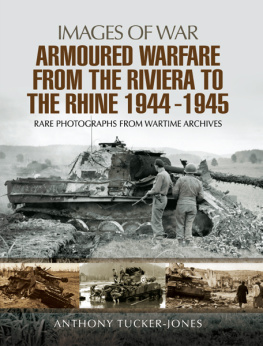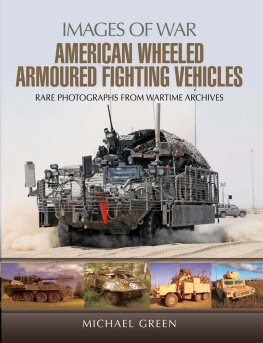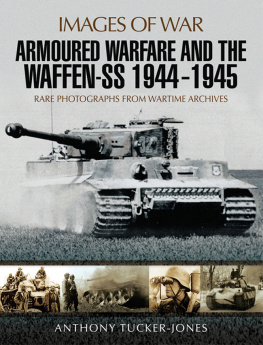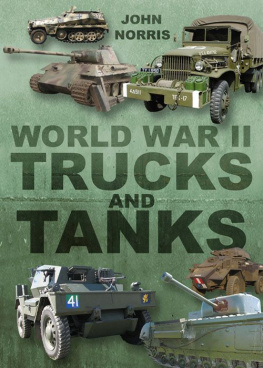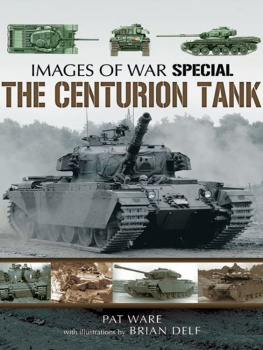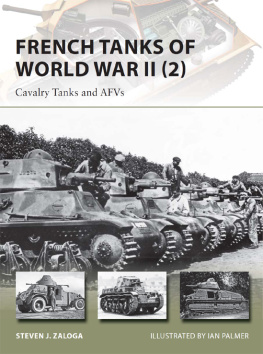Pagebreaks of the print version


Urban combat environments have almost always been a dangerous place for armoured units, especially those with limited armour protection and no overhead cover as can be attested to in this photograph os a burned-out Half-track Personnel Carrier M3A1.
LandCraft 2
M2/M3
AMERICAN HALF-TRACKS OF THE SECOND WORLD WAR
Edited by Robert Jackson
First published in Great Britain in 2019 by PEN & SWORD MILITARY
an imprint of Pen & Sword Books Ltd
47 Church Street, Barnsley, South Yorkshire S70 2AS
Copyright Pen & Sword Books, 2019
Profile illustrations David Bocquelet Tank Encyclopedia
ISBN 978 1 52674 655 9
eISBN 978 1 52674 656 6
Mobi ISBN 978 1 52674 657 3
The right of Pen & Sword Books Ltd to be identified as the author of this
work has been asserted in accordance with the Copyright, Designs and
Patents Act 1988.
A CIP record for this book is available from the British Library. All rights reserved.
No part of this book may be reproduced or transmitted in any form or by any
means, electronic or mechanical including photocopying, recording or by
any information borage and retrieval system, without permission from the
Publisher in writing.
Every reasonable effort has been made to trace copyright holders of
material reproduced in this book, but if any have been inadvertently
overlooked the publishers will be pleased to hear from them.
Pen & Sword Books Ltd incorporates the imprints of Pen & Sword
Archaeology, Atlas, Aviation, Battleground, Discovery, Family History,
History, Maritime, Military, Naval, Politics, Railways, Select, Social History,
Transport, True Crime, Claymore Press, Frontline Books, Leo Cooper,
Praetorian Press, Remember When, Seaforth Publishing and Wharncliffe.
For a complete list of Pen & Sword titles please contact
Pen & Sword Books Limited, 47 Church Street, Barnsley, South Yorkshire,
S70 2AS, England
Email:
Website: www.pen-and-sword.co.uk
Front cover. Top: 1/35 scale Dragon M2A1 kit. (Brian Richardson). Centre left: A Half-track Car M2 during a desert training exercise in April 1942. (National Archives) Centre middle: The US Army modified some Half-track Personnel Carrier M3s to serve as armored field ambulances (Patton Museum). Centre right: the 75mm Gun Motor Carriage (GMC) M3s were only a stopgap vehicle. (Patton Museum) Profile illustration: M2 in Tunisia, Operation Torch, November 1942 . (David Bocquelet Tank Encyclopedia)
Introduction
The U.S. Army had experimented late in the First World War with replacing the rear wheels of trucks with the track system of a small commercial tractor. Envisioned as artillery prime movers (towing vehicles), the prototypes were slow, but had improved mobility. Experimentation continued in the immediate post-war period, but no vehicle progressed past the prototype stage.

Acquired by the U.S. Army in 1931 for test purposes was this unarmoured halftrack designed and built by the French firm of Citron-Kgresse. It received the U.S. Army designation P17 and had front-wheel steering and 22.5-centimetre-wide (9-inch-wide) metal tracks, with attached rubber pads. Patton Museum
In 1925, the U.S. Army acquired an unarmoured commercial half-track designed and built by the French firm of Citron-Kgresse, followed by a larger model in 1931. Both were tested to evaluate their potential as light artillery prime movers. The larger and heavier French half-track weighed 1,955kg (4,300lb). Its 28hp petrol engine provided a top speed of 30kph (18mph) on level paved roads. In the end, both were judged too small and underpowered for the role.
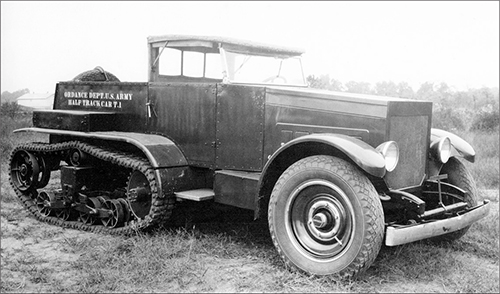
A single unarmoured pilot of the T1 series, 1934, with a VVSS system. The vehicle later received the designation Half-track Car T1E3. It had fixed rear idlers, which could be adjusted to tighten or loosen the tracks. Patton Museum
In spite of the U.S. Armys findings, the French Army extensively employed both armoured and unarmoured variants of the Citron-Kgresse half-tracks during the 1920s and 1930s. The Polish Army, also deploying armoured and unarmoured variants, was the second-largest user in Europe.
After rejecting the French half-tracks, in 1932 the U.S. tested an unarmoured half-track from the American firm of James Cunningham, Son, & Co. It was designated as the Half-Track Car T1. The letter T signified experimental. Larger and heavier than the French vehicles, it weighed 2,865kg (6,300lb) and was powered by a 115hp petrol engine. As with the French half-tracks, the U.S. Army wanted a vehicle suitable for towing light artillery pieces.

The U.S. Army pursued the development of a line of unarmoured half-track trucks during the 1930s. Envisioned primarily as artillery prime movers (towing vehicles) this example has a leaf-spring suspension system and was designated Half-track Truck T5. Patton Museum
Testing the T1 led to some improvements that resulted in a heavier version eventually designated as the T1E1. Thirty were built by the government-owned Rock Island Arsenal, from parts supplied by James Cunningham, Son, & Co. In March 1939, the T1E1 were relabelled as the Half-track Car M1. In December 1940, the secretary of war, a civilian, declared the M1 obsolete, and all disappeared from service.
The unarmoured T1 pilot underwent numerous modifications to improve its performance, which resulted in the new designation as the T1E3. In 1934, it received the vertical volute (coil spring) suspension system (VVSS) developed by the U.S. Army Ordnance Department which proved to be the forerunner of those used on U.S.-built half-tracks during the Second World War.
Volute springs are helically wound steel strips, the inner turns of which are displaced along a central axis to give the finished spring a conical shape. Volute springs have some advantages over other types of tracked suspension systems such as torsion bars because they are more compact and more damage-tolerant. If a portion of volute spring is damaged, the broken pieces can still carry at least part of the original load, something that torsion bars cannot.
At the same time as the U.S. Army was testing the unarmoured T1/T1E1, it was also developing larger unarmoured halftracks trucks, for various roles, from artillery prime movers to performing the role of tank transporter. Their designations ran from Half-track Truck T1 to Half-track Truck T9, eventually designated as the Halftrack Truck M2.
Design & Development
The Half-track Truck M2 appeared as a light artillery prime mover, with a VVSS system. Initially riding on combination steel and rubber segmented block tracks, like the earlier Half-track Car T1E3, eventually it appeared with something referred to at the time as endless band tracks. In todays lexicon, endless band track is now just band track and often seen on smaller construction and agricultural vehicles.


